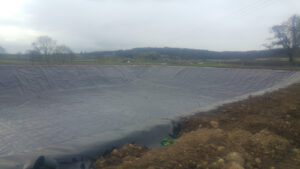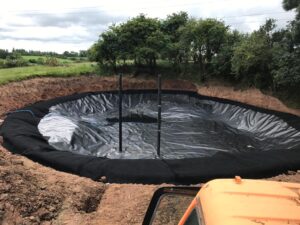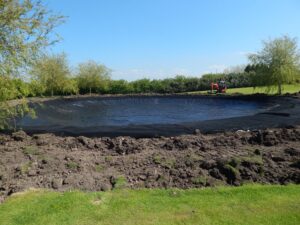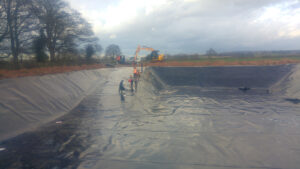Ponds, whether natural or human-made, serve as vital reservoirs for water storage, irrigation, or ecological habitats. To maintain their functionality and prevent seepage, the application of geosynthetic clay liners (GCLs) has emerged as a transformative solution. These liners, composed of clay sandwiched between geotextile layers, bolster pond integrity and aid in sustainable water management practices.
Understanding Geosynthetic Clay Liners (GCLs):
GCLs are engineered materials crafted by bonding layers of bentonite clay between woven and non-woven geotextiles. These liners are designed to create an impermeable barrier when installed, preventing water from seeping into or out of the pond.
Role in Pond Protection:
GCLs play a crucial role in fortifying the integrity of pond structures. They act as a reliable barrier against seepage, ensuring minimal water loss and preventing potential contamination from external sources.
Advantages of GCLs:
Impermeability: The primary benefit of GCLs is their ability to create an impermeable layer, reducing water seepage and maintaining desired water levels in ponds.
Durability: These liners are engineered to withstand various environmental conditions, maintaining their effectiveness over extended periods.
Ease of Installation: GCLs are relatively easy to install, making them a practical choice for pond lining projects, reducing installation time and costs.
Application Process:
Installing GCLs involves placing the liner over the prepared pond surface. Proper seam sealing and anchoring techniques are employed to ensure a continuous and secure barrier against water seepage.
Versatility in Use:
GCLs find application in diverse pond types, including agricultural reservoirs, decorative ponds, stormwater retention ponds, and industrial water storage facilities. Their adaptability caters to various water management needs.
Environmental Considerations:
The use of GCLs aligns with environmental preservation efforts. By preventing water seepage, they contribute to water conservation and aid in maintaining the ecological balance of ponds and surrounding ecosystems.
Maintenance and Longevity:
Regular inspection and maintenance are essential to uphold the effectiveness of GCLs. Periodic checks for damage, sediment accumulation, or potential punctures ensure the long-term integrity of the liners.
Sustainable Water Management:
GCLs play a significant role in sustainable water management practices. By reducing seepage and preserving water levels, they contribute to water conservation efforts and support a more efficient use of this vital resource.
Future Applications and Innovations:
Ongoing research and innovation continue to refine GCL technology, leading to advancements in material composition and installation methods, further enhancing their effectiveness and longevity.
In conclusion, the application of geosynthetic clay liners represents a pivotal step in fortifying pond infrastructure and promoting sustainable water management practices. Their role in minimising seepage, preserving water levels, and supporting environmental conservation underscores their significance in safeguarding ponds for various purposes. As technology evolves, these liners will continue to play a crucial role in preserving water resources for the benefit of communities and ecosystems alike.
To find out more about our products and services and how we can help you, please contact us using the below –
Tel: 01695 228626
Email: enquiries@enviroseal.co.uk





